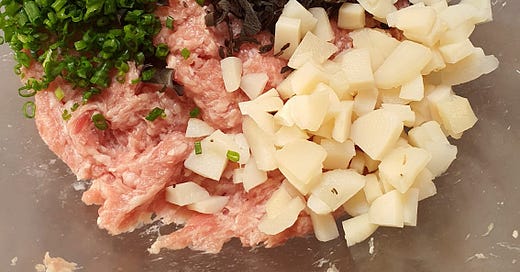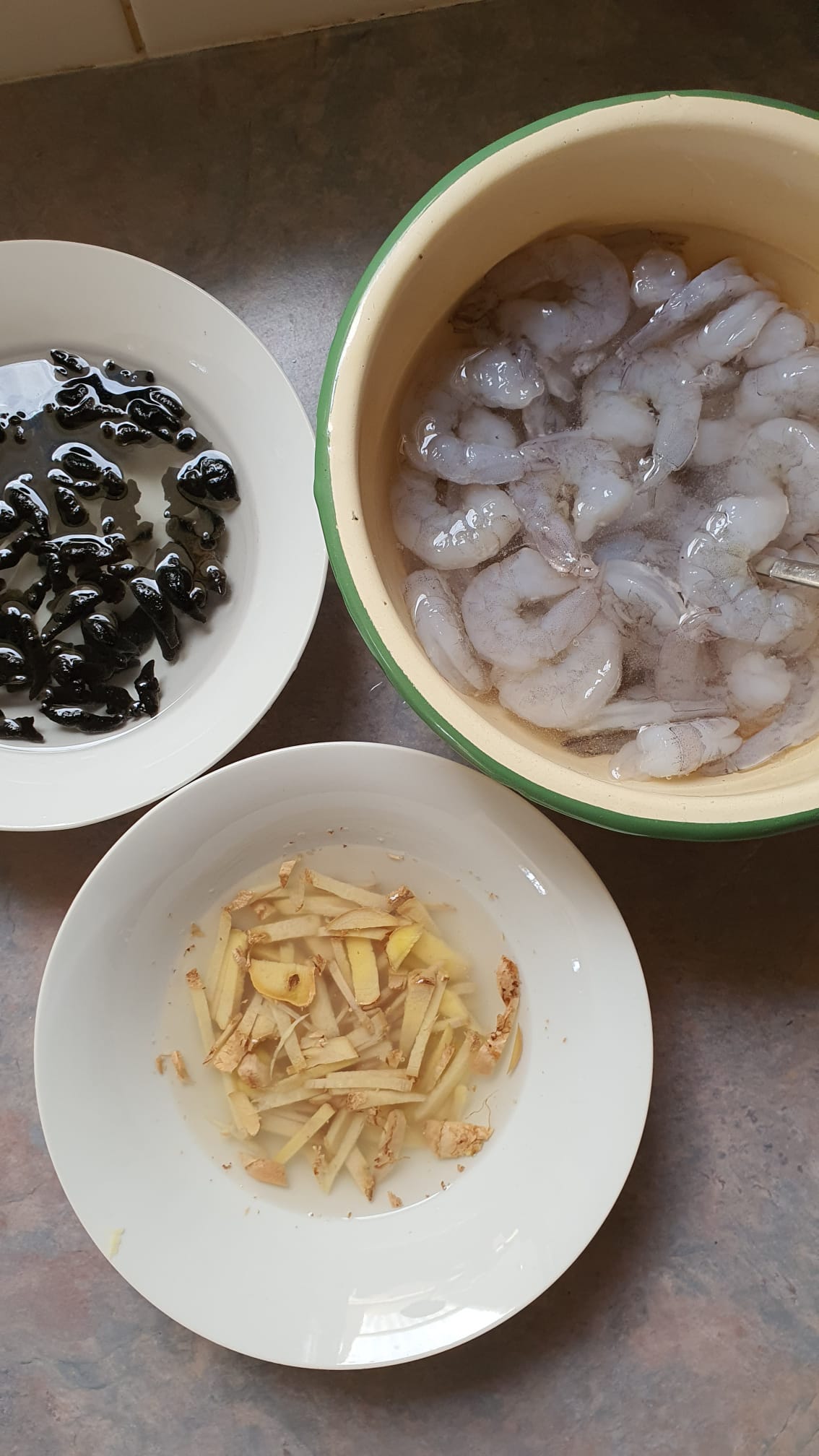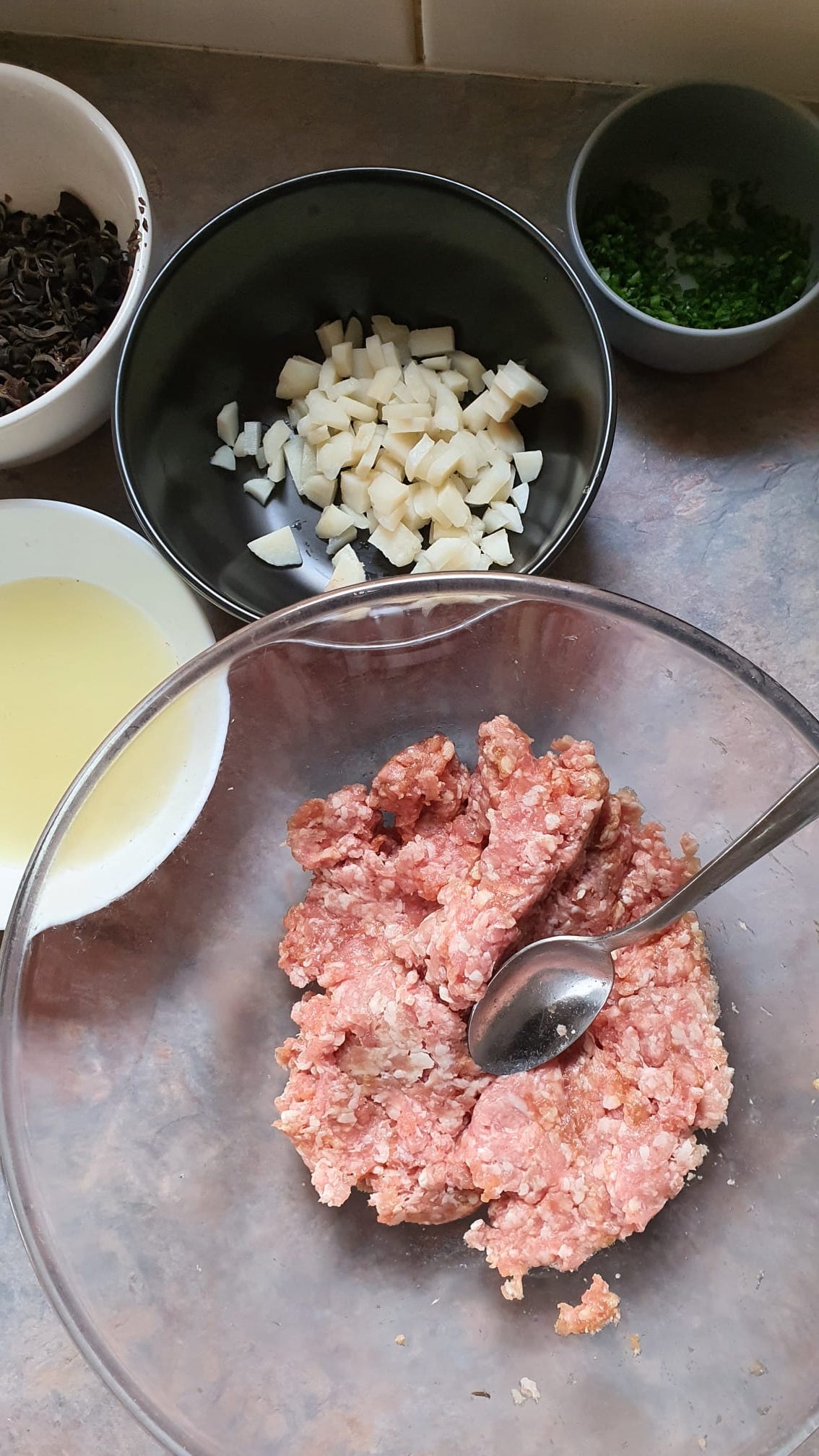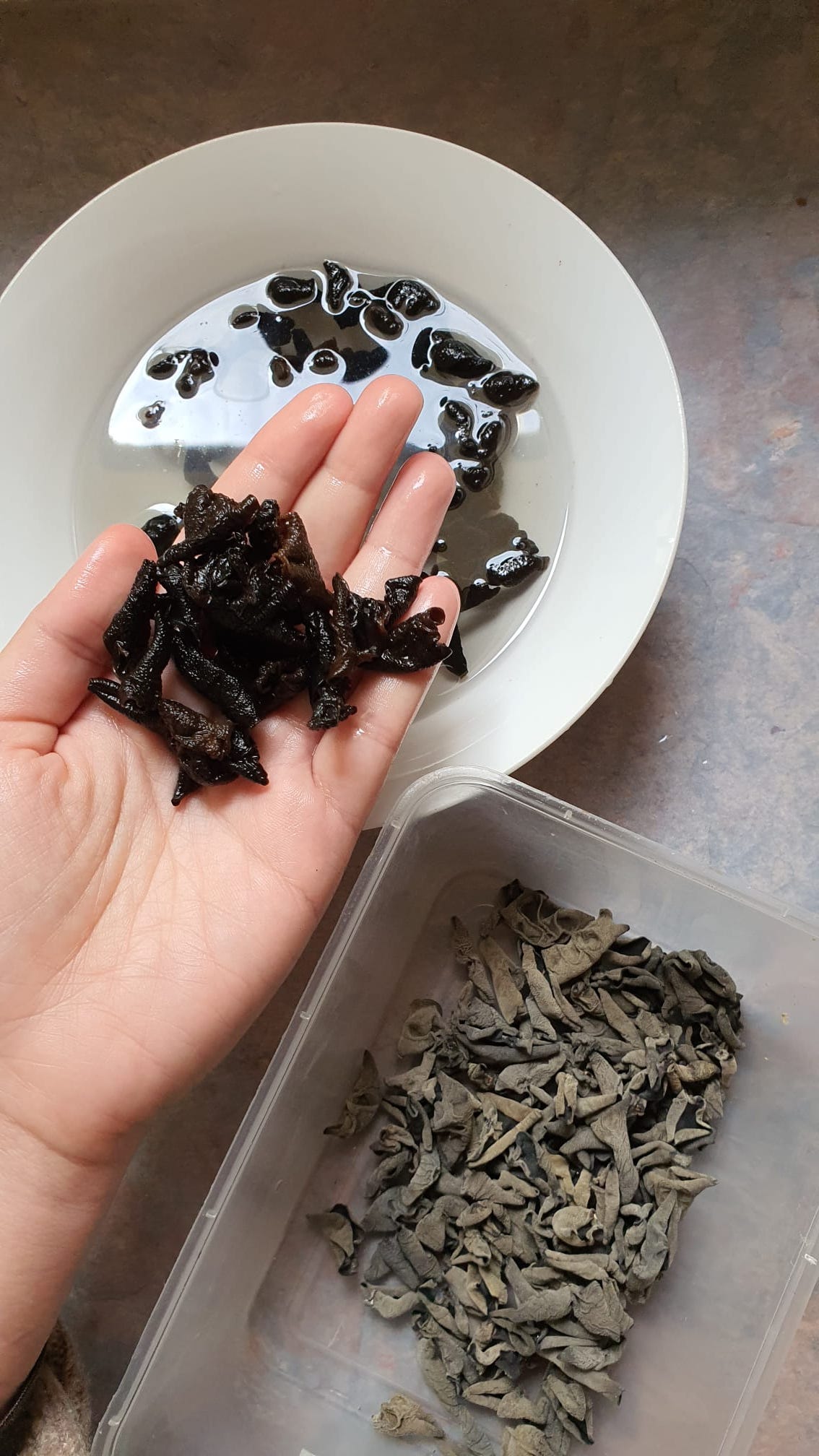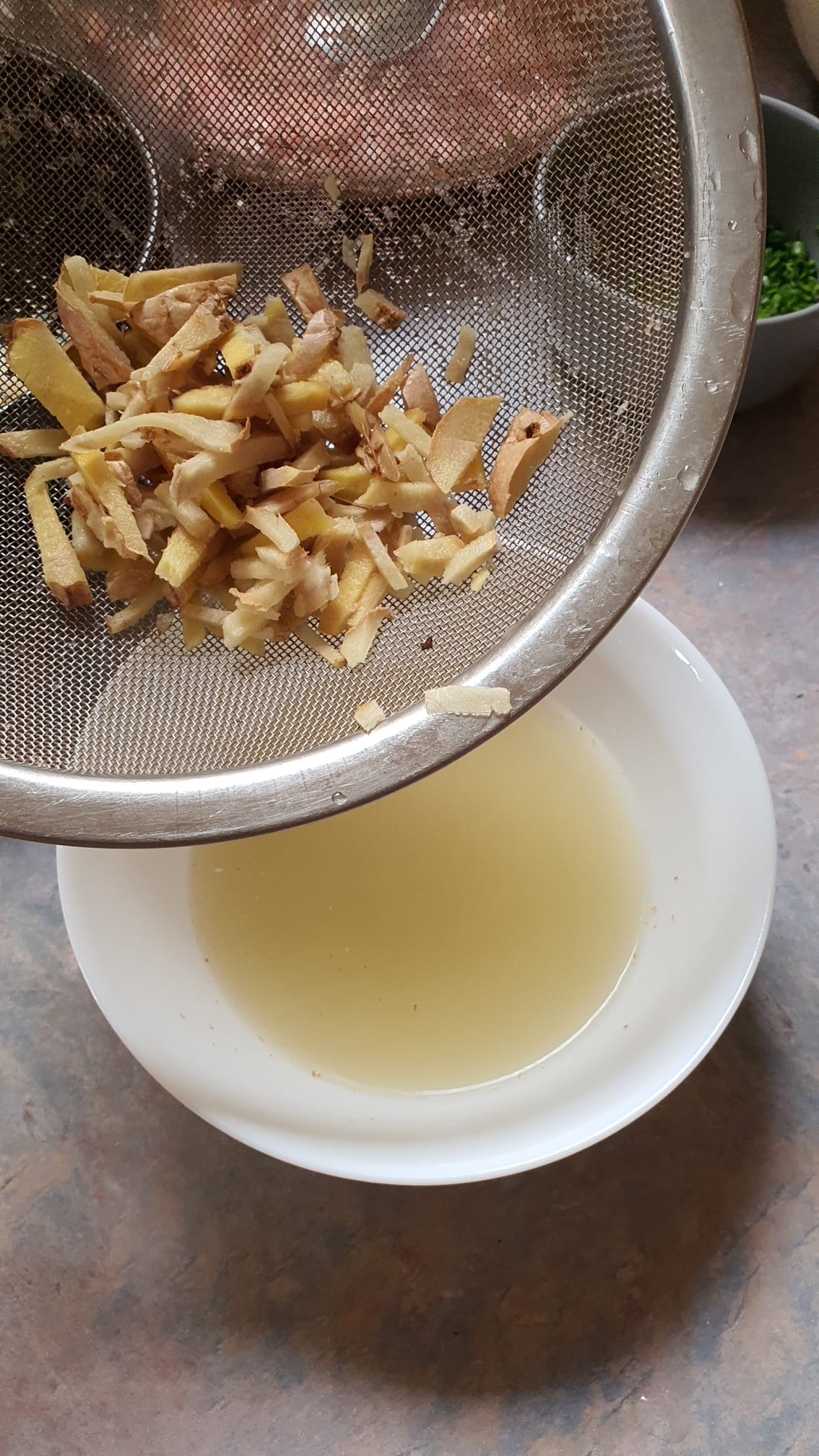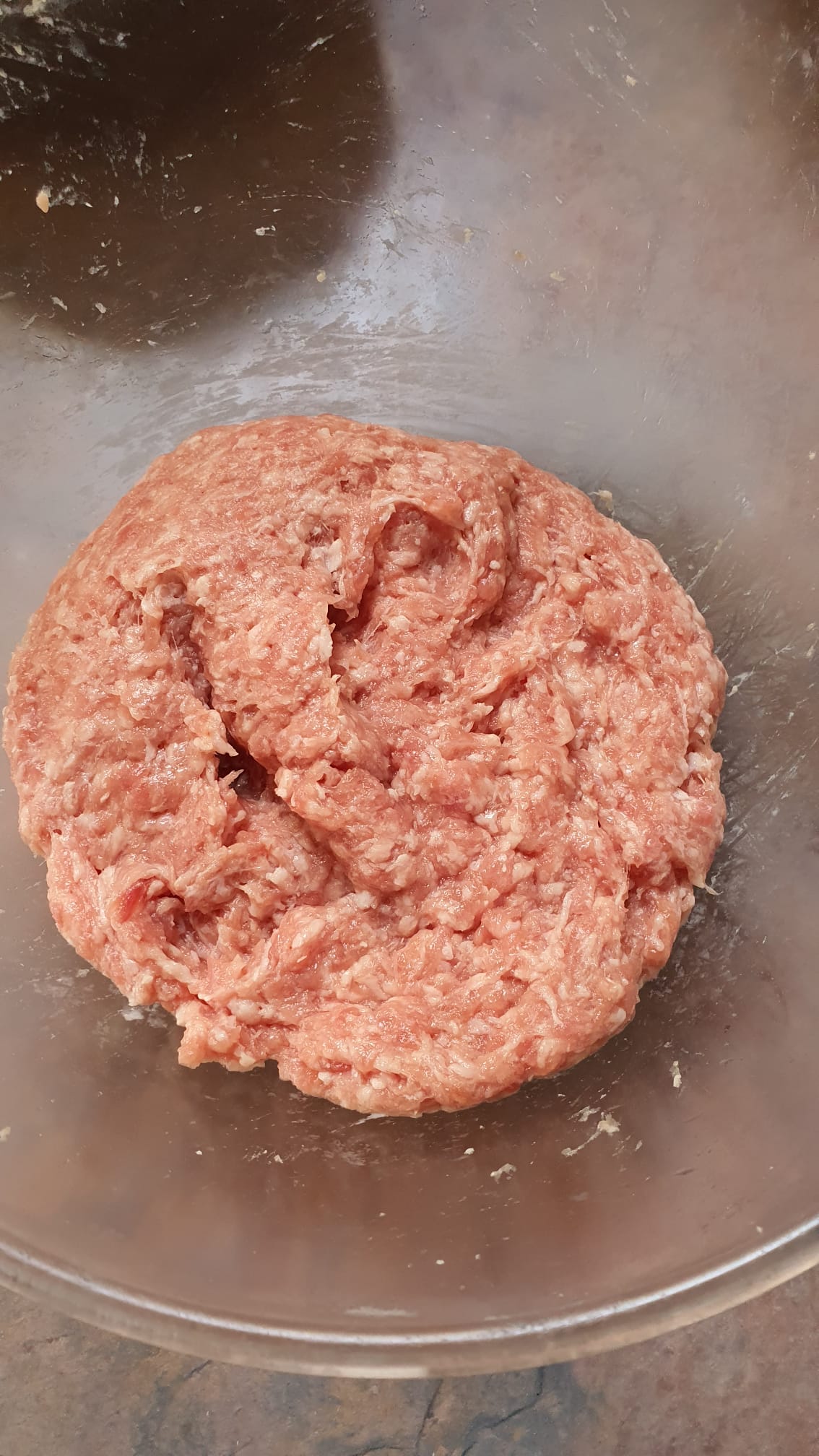Hello and welcome back to the newsletter! This is Part I of a wonton deep-dive, delving into how to make a classic wonton filling, and on Part II coming to SGPN+ this Friday, we’ll be talking about the wrapping and an easy way to enjoy your wontons!
Singapore Noodles is a fully independent, one-woman initiative that is 100% member-supported. By being a member of SGPN+, you will receive exclusive recipes and content and will be directly supporting the work of preserving Singaporean food heritage. If you love the podcast/ newsletter, get value out of it, and believe in the work that I do, then please consider a paid subscription:
Given that Wex and I live in rural Victoria, whenever we make that drive into Melbourne city every six weeks or so, we think about it strategically. People we are going to meet, errands we need to run, things we are going to eat… and it’s funny because we always inevitably end up eating some form of Asian food. When I get to pick, it’s always Thai food, dim sum, or Korean food, and when Wex gets to pick, it’s always dumplings. “But why! There’s dumplings everywhere. You can get dumplings in Daylesford, and you have frozen dumplings at the supermarket. I can even make them for you. Can we not have dumplings?”
But truth be told, I don’t make dumplings as often as I should. I’ve shared a video tutorial for wontons on this platform a long time ago, but it is a lot of work - hand-mincing the pork, brining then marinating the prawns etc. I wanted to streamline my recipe so that I could make them at home on a more frequent basis, because dumplings are so great. Indisputable fact.
We begin with a 30-minute soak of three ingredients in room temperature water - ginger, prawns, and black fungus. Just a note on the prawns: I find frozen prawns superior to fresh prawns for dumplings because they have a crunch when cooked. But to accentuate the crunch and to season the prawns all the way through, add some salt to the soaking water.
While the ingredients soak, let’s talk minced pork. Ready-minced meat is terrible; I almost never buy it. Because of health scares in recent years, mince everywhere seems to be getting leaner and leaner, but the key to a juicy and succulent dumpling is always fat. I ordered 1kg of pork belly and got the butcher to mince it up for me (1kg is the minimum quantity for them to perform this service for me, but you could try your luck with your butcher). Note: If you don’t eat pork, chicken thigh can make very delicious dumplings too!
I’ve seen lots of variation when it comes to seasonings - I like to keep it rather simple with salt, soy sauce, and sugar. The last time I made wontons, I added some dried solefish powder (watch this video for a tutorial to make your own). This is an ingredient that wonton mee hawkers use, but I didn’t have any on hand, so I skipped it on this occasion. This is also a good time to prep any additional ingredients you want to add, such as spring onion and water chestnuts (I use canned).
When 30 minutes have elapsed, slice the dried fungus up thinly. Dried black fungus comes in a few forms: slivered, whole, and what my mom refers to as ‘cats’ ears’. Slivered would seem like the obvious choice for ease, but I prefer the texture of ‘cats’ ears’ as they are far crunchier. (They are amazing in salads too.)
Massage the ginger into the water with your hands, scrunching it up as you go, before you strain it. The ginger can be kept for another purpose; we are only using the ginger-scented water in this recipe.
Pick up the seasoned meat and throw it against your bowl about 10 times. The meat should transform from disparate little bits into a sticky mass - this not only helps your other ingredients to bind, but also aids in the formation of a gel matrix that traps juices. You should be able to pick it up in a single mass.
Knead the ginger water gradually into the minced meat, throwing the meat against the bowl from time to time, so that it incorporates thoroughly. It might seem odd to add so much water to minced meat, but I’ve tested dumpling fillings with and without water, and the former stands heads and shoulders above the latter. A dense patty of meat can become so much springier and juicier with the addition of water. See how different the meat looks now compared to the picture above. It looks cohesive and sticky.
Take a little knob of meat and fry/ microwave it until it is cooked. Taste it. This is the only chance you get to adjust the seasoning - once you start wrapping, it’s too late for regrets! When you’re happy with the way it tastes, add your water chestnuts, spring onions, and black fungus.
Next, prawns! I’ve watched videos of restaurants in Hong Kong making their wontons and it seems to be the norm to use a lot of small whole prawns and just a little minced meat to bind everything. There’s more minced meat used in wontons in Singapore (prawns cost more than mince), so the amount of prawns to add is really up to you. Here, I’ve cut my prawns in half because they are not quite as small to be stuffed whole into wrappers.
To dry the prawns quickly, lay them on kitchen towels, place another sheet of kitchen towel over the top, and roll the whole thing up like a burrito.
Mix it into the meat mixture, and that’s your filling done! At this point, it can be kept in the fridge for a day, or be used to wrap dumplings right away. The following recipe makes 80 dumplings, which makes enough to have dumplings in frozen storage. Feel free to halve the recipe.
Wontons
Makes about 80
35g unpeeled ginger, cut into matchsticks
100g water
400g frozen deshelled prawns, thawed
2 tbsp salt, or to taste (I’m using table salt)
500g water
10g dried black fungus
450g minced pork belly
1 1/2 tsp salt
1 1/2 tbsp soy sauce
1 tbsp dried solefish (tee poh) powder (optional)
1/2 tbsp sugar
10g sliced spring onion
65g diced water chestnuts
500g wonton wrappers (1 large packet)
Prepare four bowls. In the first, combine the ginger and 100g water. In the second, combine the prawns, salt, and 500g water. In the third, add the dried black fungus and cover with a liberal amount of water. In a large mixing bowl, combine the pork belly, salt, soy sauce, tee poh, and sugar. Set all four bowls aside for 30 minutes.
After 30 minutes, scrunch the ginger into the water with your hands, then strain to obtain the ginger water (save the ginger for another dish). Drain the prawns. If you are using tiny prawns, you won’t need to cut them, but if you’re using regular-sized prawns, cut them in half or thirds. Place them in a single layer on kitchen towels, cover with another sheet of kitchen towel, and roll the prawns up like a burrito to dry them. Drain the black fungus and slice thinly.
Pick up the seasoned pork belly and throw it against your bowl 10 times. It should hold together as a sticky, cohesive mass. Gradually knead in the ginger water, a little at a time, until well-incorporated into the meat. Microwave or fry a small piece of meat, taste it, and adjust the seasoning if necessary. Knead the black fungus, spring onion, and diced water chestnuts into the pork. Finally, knead in the prawns. Wrap the dumplings (see guide here) - the filling should use up approximately 500g wonton wrappers.

